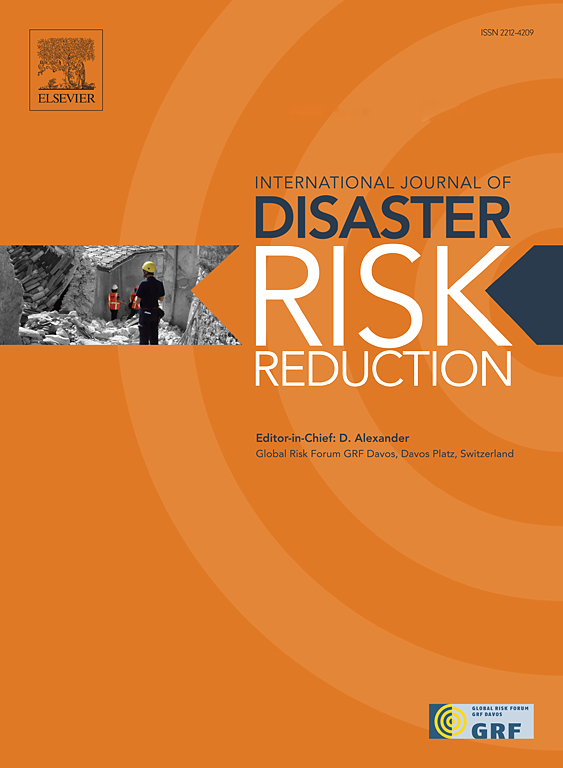Tsunami evacuation risk change associated with urban recovery in Banda Aceh after 2004 Aceh tsunami
IF 4.2
1区 地球科学
Q1 GEOSCIENCES, MULTIDISCIPLINARY
International journal of disaster risk reduction
Pub Date : 2025-03-15
DOI:10.1016/j.ijdrr.2025.105400
引用次数: 0
Abstract
Twenty years after the 2004 Aceh tsunami, Banda Aceh has undergone significant urban recovery, including the development of tsunami evacuation infrastructure. However, shifts in population distribution and evacuation capacity necessitate a reassessment of tsunami evacuation risk. This study evaluates the extent to which the “Build Back Better” strategy has been realized in terms of tsunami evacuation risk reduction, considering long-term population changes and the expansion of evacuation facilities. Using WorldPop Hub data (2000–2020), we analyzed demographic changes within tsunami risk zones in Banda Aceh. While the highest-risk zone (R3) experienced a population reduction to three-quarters of its previous level, the risk-free zone (R0) saw a 6.9 percentage point increase, suggesting relocation from high-risk coastal areas. However, nearly 29 % of Banda Aceh’s population still resides in high-risk zones, highlighting persistent vulnerabilities. To assess evacuation feasibility, we conducted network-based tsunami evacuation simulations in Meuraxa, the most at-risk district, under three scenarios: (A) horizontal evacuation only, (B) using existing tsunami evacuation buildings (TEBs), and (C) using both TEBs and nearby facilities. The evacuation failure rates within the 35-min tsunami arrival time were 84.5 %, 3.1 %, and 1.1 %, respectively, indicating the remaining risks despite recovery efforts. While TEBs reduced evacuation times by over 30 min, facility capacity remained imbalanced, with some exceeding capacity tenfold. These findings highlight the need for improved evacuation facility placement and capacity to enhance future tsunami resilience.
求助全文
约1分钟内获得全文
求助全文
来源期刊

International journal of disaster risk reduction
GEOSCIENCES, MULTIDISCIPLINARYMETEOROLOGY-METEOROLOGY & ATMOSPHERIC SCIENCES
CiteScore
8.70
自引率
18.00%
发文量
688
审稿时长
79 days
期刊介绍:
The International Journal of Disaster Risk Reduction (IJDRR) is the journal for researchers, policymakers and practitioners across diverse disciplines: earth sciences and their implications; environmental sciences; engineering; urban studies; geography; and the social sciences. IJDRR publishes fundamental and applied research, critical reviews, policy papers and case studies with a particular focus on multi-disciplinary research that aims to reduce the impact of natural, technological, social and intentional disasters. IJDRR stimulates exchange of ideas and knowledge transfer on disaster research, mitigation, adaptation, prevention and risk reduction at all geographical scales: local, national and international.
Key topics:-
-multifaceted disaster and cascading disasters
-the development of disaster risk reduction strategies and techniques
-discussion and development of effective warning and educational systems for risk management at all levels
-disasters associated with climate change
-vulnerability analysis and vulnerability trends
-emerging risks
-resilience against disasters.
The journal particularly encourages papers that approach risk from a multi-disciplinary perspective.
 求助内容:
求助内容: 应助结果提醒方式:
应助结果提醒方式:


